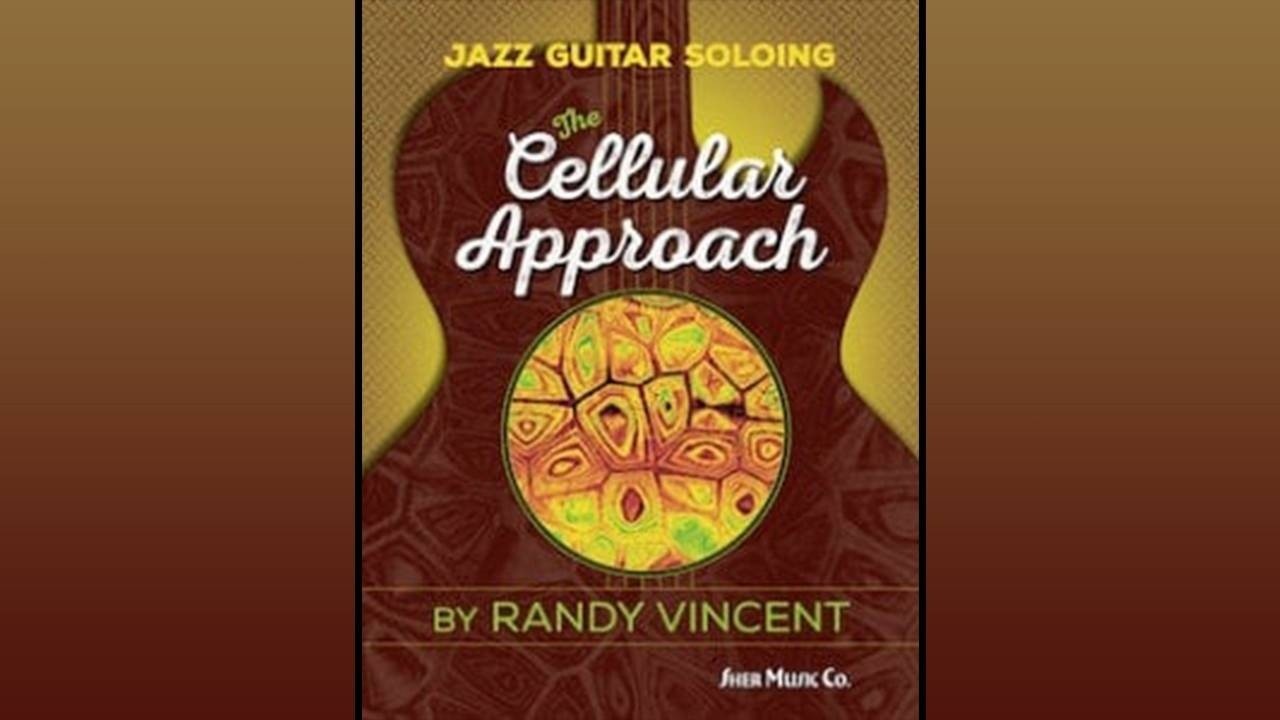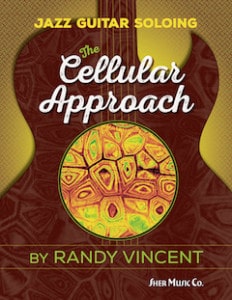
The Cellular Approach - by Randy Vincent
Aug 27, 2015Jazz Guitar Soloing: The Cellular Approach is yet another great jazz guitar instruction gem by author Randy Vincent. He wrote several timeless jazz guitar books on Sher publishing. If you didn't check it out yet, I highly recommend 3-Note Voicings by the same author.
Cellular Approach comes immediately after Line Games by Randy Vincent, a book about improvising melodic lines. I didn't get a chance to review Line Games yet. Oddly enough, his latest book Jazz Guitar Soloing: The Cellular Approach (the one reviewed on this page) was the first time yours truly got in contact with Vincent's melodic teachings. Indeed, I only knew the author for his in-depth harmonic jazz guitar books such as 3-Note Voicings and The Drop-2 Book.
The premise of Cellular Approach is that we can learn to use small melodic fragments called 'cells' during improvisation. Instead of memorizing (or creating) long lines of notes, the author insists that we can use basic 4-note cells to move from one chord to the next while soloing. And by doing so, we chose to outline as strongly as possible the move, the chord change. This works extremely well when chords go by in the typical cycle of fourths. But using a cellular approach can be useful on virtually any sequence of chord changes.
Take lines played from the masters on jazz recordings. Slice them up. Then apply them wherever you need them while soloing on chord progressions!
The book contains dozens of examples from actual solos (by jazz greats such as Joe Pass) and is written in a friendly, non-intimidating tone of voice. It goes from the most basic "1 2 3 5" digital pattern on cycling dominant chords all the way to completely atonal (chromatic) all-purpose lines, with tons of applicable II-V-I in the middle of book. That's several lifetimes of study right there!

And the best part is: a jazz guitarist of any level can find something to sink his/her teeth into within Cellular Approach. The beginner will be able to "see the light" on fast moving changes by using (and copy-pasting) the same melodic formula over several bars. While the more adventurous will look into the later chapters to get chromatic "out" ideas such as side slipping and atonal lines.
Now my 2 cents (hey, that's why we're calling it a "review" right?) ...
Pros
As you may know, I'm a huge fan of Connecting Chords, by Bert Ligon, which describes (almost exclusively) the strongest way to outline chord changes in improvisation. I like the fact that Vincent (in Cellular Approach) outlines not only the strongest possibilities, but lots more of logical and good-sounding lines that run through changes. In short, I think of it like an extension of the Connecting Chords book.
Lots of lines by legendary players are used to demonstrate cells. The information was not conceived in a vacuum, and we can feel it being solidly anchored in the jazz tradition.
The author spends time demonstrating the same lines over different string sets on the guitar. So he's giving relevant, guitar-specific advice for fingerings and technique. (This is superfluous if you're not a guitarist!)
Every line, cell or concept is explained concisely yet precisely. There's no "Here, play that!" moment, and no explanation has been left out. I feel a great effort to keep things clear and short throughout the book.
There's tons of tasty II-V-I lines to work on. And then some.
Cons
No TABS. (Wait, is that a "pro" after all?!)
The description of the alternative and optional fingerings (in certain chapters), although fun, can be a bit overkill. Even for an advanced player.
There's way too much material to handle. Which might be a pro if you can focus on one tiny thing at once (and use patience, like the author recommends in the introduction).
Sample Pages
Cellular Approach: Wrap Up
All in all, I'd like to congratulate the author Randy Vincent and the publisher Chuck Sher for yet another successful jazz guitar publication. There's so many products on the market nowadays, it is rare that we stumble upon a piece like Jazz Guitar Soloing: The Cellular Approach that will stand the test of time.

Click to see the full list of my favourite jazz guitar books!









